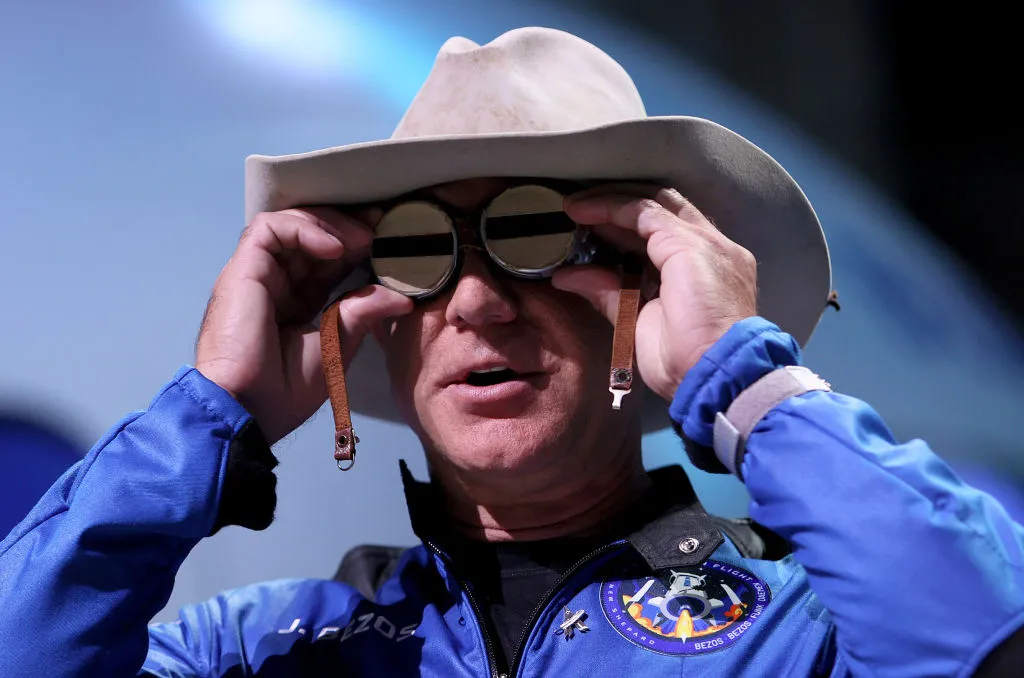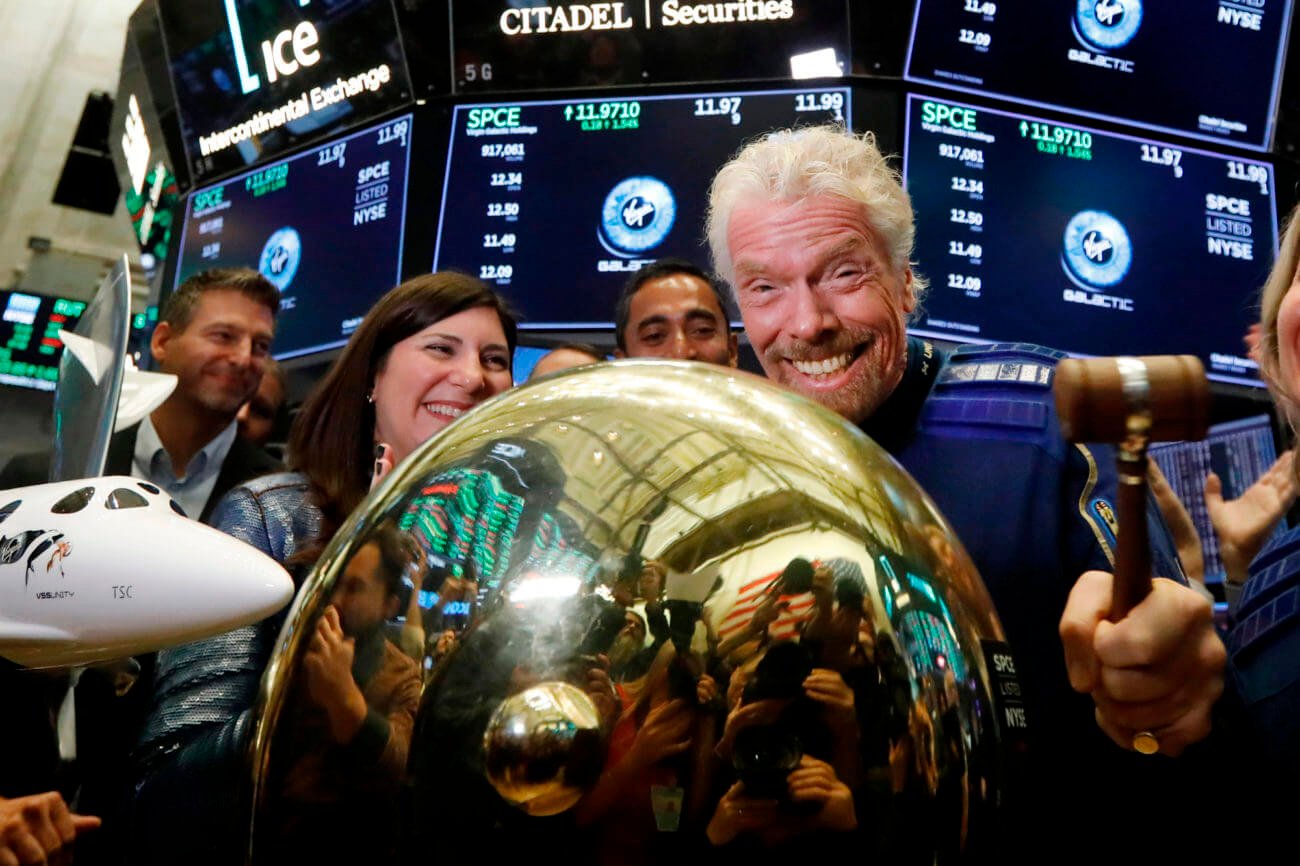Jeff Bezos Blue Origin Rocket: A Timeline of the Space Tourism Program

Key Takeaways
- Jeff Bezos aims to develop space tourism with its Blue Origin.
- The company is now working on a new rocket, New Glenn.
- When did Bezos’ journey around the world begin?
Initially, space exploration was largely driven by governmental and national interests, especially during the height of the Cold War in the ’60s and ’70s.
In 2000, inspired by science fiction and a yearning to explore beyond Earth, Jeff Bezos laid the foundation for Blue Origin, a company with a bold vision: to make space travel accessible.
Jeff Bezos’s Blue Origin Program
Bezos’ journey to bring people out of this world started in 2000, which laid the foundation for Blue Origin.
After 12 years, efforts culminated in a historic moment as New Shepard , Blue Origin’s suborbital rocket, embarked on its inaugural journey. This uncrewed flight not only marked a milestone in the company’s journey but also showcased the revolutionary concept of rocket reusability, a breakthrough poised to revolutionize the economics of space exploration.
In 2015, a pivotal moment in space history unfolded as New Shepard returned to Earth, defying the conventional fate of spent rockets . Touching down on a bed of desert sand, with its engines still purring, Blue Origin’s triumph in achieving reusable spaceflight solidified its status as a trailblazer in sustainable space travel.
Less than 12 months later, Blue Origin’s program continued with a series of successful test flights, each pushing the boundaries of New Shepard’s capabilities higher. In 2019, New Shepard transformed the interior of its capsule, offering a glimpse into the future of space tourism. With six expansive windows framing unparalleled views of Earth, the stage was set for “an unforgettable cosmic journey,” the company said.
Most Recent Updates
On February 22, 2021, a setback cast a shadow as an engine failure during ground testing rattled Blue Origin. Despite that, the company remained resolute in its commitment to safety and progress.
On July 20 of the same year, the world held its breath as Jeff Bezos, joined by his brother Mark, aviation legend Wally Funk, and the youngest-ever space traveler Oliver Daemen, embarked on a historic voyage aboard New Shepard. This achievement reaffirmed Blue Origin’s place at the forefront of commercial space exploration.
Blue Origin’s New Rocket
Blue Origin is currently advancing in its testing of the reusable New Glenn rocket, anticipated to potentially debut later this year for NASA’s EscaPADE (Escape and Plasma Acceleration and Dynamics Explorers) mission to Mars.
In recent developments, Blue Origin has positioned a prototype of the New Glenn space rocket vertically on Launch Complex 36 (LC-36) at the Kennedy Space Center in Florida. This marks a significant milestone, with the company’s CEO Jeff Bezos sharing an image alongside the towering rocket on the launch pad.
According to Blue Origin’s official press release, the New Glenn rocket will undergo several days of vertical positioning on the launch pad to complete all scheduled tests for this phase of experimentation. These tests encompass typical mission operations to validate launch phases, and ground structures, and provide training for the personnel involved.
This phase of testing commenced in December 2023, with the transportation of first-stage modules from the manufacturing plant to an integration facility approximately 15 km away. In the upcoming days, tests will include cryogenic propellant loading (liquid methane and oxygen), pressure control, and integrated venting systems.
Once operational, New Glenn will stand as one of the tallest space rockets, towering at 98 meters. Though shorter than SpaceX’s Starship and NASA’s SLS, its 7-meter fairings will afford increased payload space or the capability to carry multiple payloads concurrently. Blue Origin also underscores the rocket’s reusability, with the first stage slated for a minimum of 25 missions and planned landings on a maritime platform roughly 1000 km from the coast. This emphasis on component reuse aims to drive down costs and enhance competitiveness in the space launch market.
Bezos’ Rivals In Space Tourism
Blue Origin’s primary competitor, Virgin Galactic, founded by Richard Branson, stands out as one of the most recognizable names in the burgeoning space tourism industry. Specializing in suborbital spaceflight experiences, Virgin Galactic achieved a milestone with a successful crewed test flight into space in 2018, capturing widespread attention.
In contrast, Orion Span, an American space tourism venture, offers a unique proposition with its Aurora space station concept. Unlike traditional short-term space travel experiences, Aurora aims to redefine luxury by providing customers with the opportunity for overnight stays in space, effectively transforming the concept of space tourism into an immersive space hotel experience.
Led by Elon Musk, SpaceX has already achieved numerous successful space missions and is poised to offer regular space travel services to paying customers. Musk’s ambitious vision extends beyond Earth’s orbit, with plans to facilitate lunar expeditions and, ultimately, interplanetary travel to destinations like Mars.
Today, with over 6,542 satellites orbiting our planet, SpaceX stands as the foremost satellite owner and operator, boasting over 1,655 satellites, many of which are integral to Elon Musk’s ambitious Starlink project aimed at providing global high-speed internet connectivity.
Boeing’s collaboration with NASA extends beyond spacecraft production, as the company has entered the space tourism arena through its agreement with NASA. This partnership grants Boeing the authority to sell seats on select crew vehicles to private individuals seeking to embark on spacefaring journeys, further diversifying the landscape of commercial space travel opportunities.


